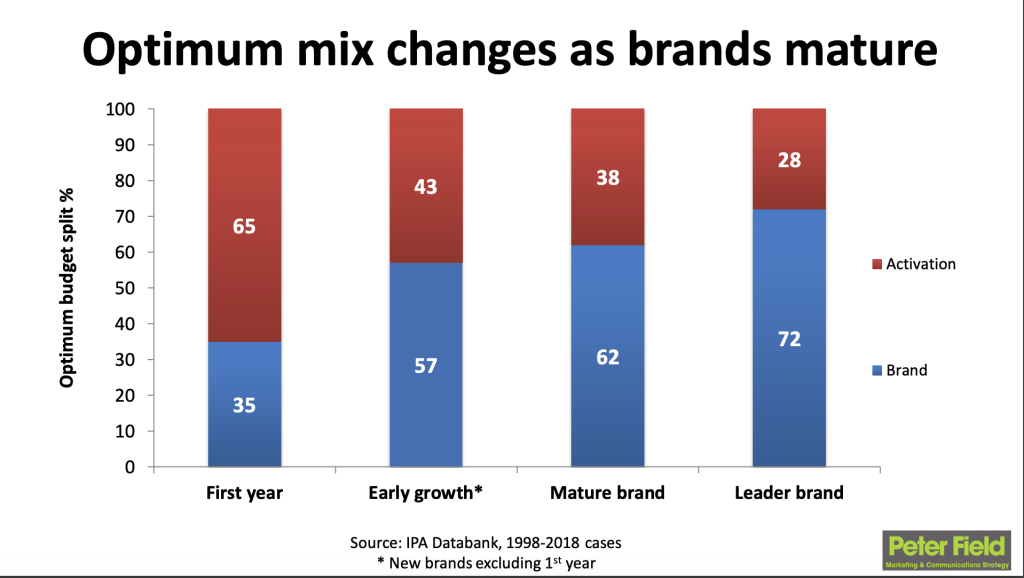As a media agency, we’ve guided countless e-commerce brands through their growth journeys. Time and again, we’ve seen that when these brands decide to scale up their marketing efforts, they often struggle with understanding what to look for in terms of campaign attribution, both for short-term impact and long-term growth. Let’s walk through the common challenges we’ve encountered and the solutions we’ve successfully implemented.
TL;DR: Key Takeaways
- Attribution needs evolve as e-commerce activities grow
- Early-stage: Focus on basic multi-touch attribution and customer surveys
- Growth-stage: Introduce post-purchase surveys and basic marketing mix modeling
- Scaling brands: Implement advanced MMM and controlled geo-testing
- Established brands: Use unified measurement approach (MMM, MTA, and experimentation)
- Balance short-term performance metrics with long-term brand building
- Regularly review and update attribution strategies as the business evolves
Integrating AI tools can streamline attribution analysis, offering deeper insights into channel performance.
- Combine multiple attribution methods for a comprehensive view
- Align teams around the right metrics for each growth stage
The Attribution Dilemma: What We've Observed
- Overemphasis on Last-Click: Many growing e-commerce brands initially focus solely on last-click attribution (which is fine at first), however they usually end up missing the bigger picture of their marketing impact. Understand the limitations of last-click attribution in performance tracking.
- Short-Term vs. Long-Term Impact: Brands often struggle to balance measuring immediate sales lift with building long-term brand value.
- Channel Complexity: As brands add more marketing channels, attribution becomes increasingly complex and challenging. Explore how multi-channel strategies impact attribution complexity.
- Budget Allocation Uncertainty: Without proper attribution, brands struggle to optimize their marketing mix as they scale.
Our Recommended Approach: Evolving Attribution with Growth
Red area (upper part): This represents the portion of the budget allocated to Performance Marketing. It’s larger in the early stages and gradually decreases as the company matures.
Green area (lower part): This represents the portion of the budget allocated to Brand Building. It starts smaller in the early stages and grows larger as the company matures.
The intention is to show how the budget allocation shifts over time:
Early-stage brands typically focus more on performance marketing (larger red area).
As brands mature, they gradually increase their investment in brand building (growing green area).
More details below on what is the optimal budget split between performance and brand
Based on our experience, here’s how we guide e-commerce brands to evolve their attribution strategies as they grow:
1. Early-Stage Brands (First Year)
- What we typically see:
Heavy focus on performance metrics, often just last-click attribution - Our recommendation:
- Implement basic multi-touch attribution
- Already running small tests offline? Use promo codes for channel tracking
- Optional : Conduct customer surveys to understand the full path to purchase
2. Growth-Stage Brands (Second Year)
- Common client concerns:
Unsure how to measure brand-building efforts - Our recommendation:
- Introduce post-purchase surveys; “How did you hear about us” with randomized answers usually does the trick. (Expert Tip: have this activated at least 2 weeks prior to campaign start to get an early reading on the threshold)
- Implement more sophisticated multi-touch attribution models
- Optional : Begin basic marketing mix modeling for a holistic view
3. Scaling Brands (Years 3-5)
- Challenges we address:
Balancing performance and brand metrics, understanding cross-channel impact - Our recommendation:
- Implement advanced marketing mix modeling (Now that you have at least 3 years of data available – you need to feel confident with the numbers)
- Introduce controlled geo-testing for measuring incremental impact
- Optional : Develop custom attribution models tailored to the brand’s unique customer journey
4. Established Brands (5+ Years)
- What mature clients need:
Comprehensive understanding of all marketing touchpoints and their long-term impact - Our recommendation:
- Apply a unified measurement approach combining MMM, MTA, and experimentation
- Brand uplift studies to quantify long-term brand building effects
- Customer lifetime value modeling tied to attribution insights
Discover how unified measurement approaches optimize marketing strategies.
Key Learnings from Our Client Experiences
- Start Early, Iterate Often: We always advise clients to look at implementing basic attribution from day one and continuously refine their approach.
- Combine Methodologies: The most successful brands use a mix of attribution methods to get a complete picture.
- Don’t Neglect Brand Building: We’ve seen time and again that brands who balance performance and brand metrics achieve more sustainable growth.
- Align Teams Around Metrics: It’s crucial to get all stakeholders on the same page about which metrics matter at each stage of growth. We would like to avoid internal conflicts between the Performance/UA Team and Brand Team.
- Bonus : Measure Incremental Reach: We’ve found that understanding the incremental reach of each channel helps brands optimize their media mix for maximum audience coverage without unnecessary overlap.
Common Pitfalls We Remind Clients Avoid
- Ignoring upper-funnel activities in attribution
- Over-crediting a single channel (usually paid search)
- Neglecting to update attribution models as the business evolves
- Failing to account for external factors in performance fluctuations
- Overlooking the importance of incremental reach in multi-channel campaigns
Spotlight on Incremental Reach
As brands scale and diversify their marketing channels, understanding incremental reach becomes crucial. Here’s how brands could approach it:
- Define Baseline Reach: Establish the reach of existing channels.
- Measure Channel-Specific Incrementality: Analyze how each new channel adds to the overall reach.
- Cross-Channel Analysis: Identify overlaps and unique contributions of each channel.
- Optimize for Efficiency: Adjust the channel mix to maximize unique reach while minimizing redundant exposure.
Incorporating incremental reach analysis into your attribution strategy helps ensure that your expanding marketing efforts are efficiently reaching new audiences, rather than repeatedly targeting the same group across multiple channels.
A Recommended Approach: Evolving Budgets with Growth
Insights from Industry Experts
- Les Binet and Peter Field: Their work “The Long and the Short of It” suggests the optimal balance between brand building and performance marketing is around 60:40. This balance helps achieve both short-term sales and long-term brand growth (Marketing Week).
- WARC: According to WARC’s “The Future of Measurement” report, only 2% of marketers use a combination of attribution experiments and marketing mix modeling (MMM) to measure the full impact of their marketing. This highlights the need for a more holistic approach to marketing measurement (Bizcommunity, MediaBrief).
- Nielsen: Emphasizes the importance of multi-touch attribution (MTA) in today’s complex marketing landscape. MTA helps reconcile multiple digital footprints and understand the incremental lift of marketing campaigns across various channels (Nielsen).
Since You Read This Far, Here Are The Next Steps For You:
- Take a moment to audit your current attribution practices
- Identify gaps based on growth stage and goals
- Develop a roadmap for implementing new attribution methods
- Set up regular check-ins to review and adjust strategy
By creating this rough guide, we hope to help e-commerce brands make more informed marketing decisions, driving sustainable growth as they scale their operations.













